Sara Scarpa spends a weekend in Modena, a city primarily famous for performance cars and the world’s best vinegar, but one that has much more to offer besides…
After wandering along the cobbled streets in the centre of Modena, we finally reach a small, dark square with a few tables lit by a tall lamp. The place is empty and very quiet; the only noises we can hear are distant voices from the nearby thoroughfare of Corso Canalchiaro.
We look across the small square towards the only lit building and through the window we can see a woman working in the kitchen. We check the name on the sign above the door to confirm that we are in the right place: La Frasca, a restaurant recommended to us by not one but three locals.
We have arrived at the correct spot, so we enter and head towards the kitchen. A woman in an apron walks out; we quickly exchange hellos and then she abruptly asks us if we have any problems with food. We look at each other surprised – both thinking that this is a rather unusual welcome – but after a busy morning in Venice and the train journey via Bologna we are tired and hungry.
Obviously, our prompt answer is “No”, (we definitely don’t have any problems with food in general – quite the contrary, especially in Emilia-Romagna, the gastronomic heart of Italy!). “Good!” she replies.
We are the first customers but by the time we order the place is packed with locals.
As it turns out, the woman is Ada, the owner, chef, and waitress, all in one, who chooses for us what she is about to serve.
The chosen dishes are obviously what she has just prepared and the freshest off the menu, so we trust her. Ten minutes later she comes out with a big platter and serves to every table some fantastic slabs of Parmigiano-Reggiano drizzled with drops of mouth-watering Aceto Balsamico di Modena – the real vinegar – and some slices of prosciutto crudo. She then regularly comes out every 10 minutes holding a huge pan and serving small portions of different delicious primi piatti to all the tables.
As she cannot cope with doing everything herself she picks a man from one of the tables, one of her customers, to help her refill everyone’s wine glasses! It is an unusual and fantastic experience definitely to be repeated.
Something for everyone
Located in the Italian northern region of Emilia-Romagna, along the ancient Roman road Via Emilia, Modena is like a big platter of antipasti misti – there is something to suit everyone’s tastes!
The province has so much to offer. Firstly, the food. The area around Modena has a long culinary history and is one of the richest in DOP local produce. The consortia guarantee the best quality of products from the area: traditional balsamic vinegar, Modena ham, Parmigiano-Reggiano, fruit from Vignola with its delicious cherries and plums, and Lambrusco – in all its variations.
Secondly, architecture and art. Modena Cathedral, the Ghirlandina Tower and Piazza Grande have been declared a UNESCO World Heritage Site (1997), and the nearby Estense Gallery is one of the oldest and most important national galleries in Italy.
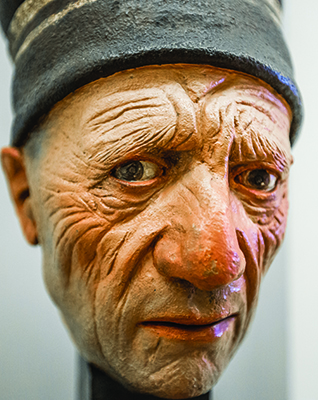
Next, fast cars! Modena is at the centre of Motorvalley, a paradise for cars enthusiasts.
The town offers three car museums – Museo Enzo Ferrari, Umberto Panini Motor Museum and Museo dell’Auto Storica Stanguellini – as well as the makers of Maserati and the Autodromo, all in the city centre. The Ferrari Museum, and Ferrari production, are located just out of town, in nearby Maranello. Towards nearby Bologna, you can discover Lamborghini and Ducati.
Lastly, Modena is the birthplace of one of the greatest tenors of all time, Luciano Pavarotti. Visiting his house – now transformed into a house-museum – will be a wonderful experience, especially for opera lovers.
Located in the outskirts of Modena, the house keeps the Master’s personal items that he loved such as costumes, awards and memories accompanied by videos and music which brings you close to the life of the tenor and the man he was.
But as if food, art, fast cars and music were not enough, Modena offers something also for the little ones or for the enthusiast collectors – The Cards and Stickers Museum, born from the passion of Giuseppe Panini, founder of the famous company that bears his name together with his brothers in 1961.
The Museo della Figurina displays 2,500 pieces (and besides stickers, trade cards and similar collectables) and comprises a wonder room and a display structure miming a gigantic album ready to be opened!
The Romanesque Heart
Having spent the night at the elegant Hotel Canalgrande and following a delicious breakfast in the pretty courtyard, we headed to Piazza Grande, the medieval centre of Modena. Built in the 12th century, this has always been the centre of religious and civic life.
The piazza was also a marketplace for trading, and the place where justice was administered, sometimes with various instruments of torture. Occasionally, the Pietra Ringadora (the stone table you can still see on the side of the square) was used to punish criminals by making them sit on it with naked bottoms after it had been covered with turpentine! The piazza was also the stage for religious processions, festivities and the celebration of joyous events.
Nowadays, it hosts the Festivalfilosofia, held every September by major philosophers, and is the everyday scenic setting where locals meet up for a drink and a chat. Of course, we ended up joining them. We sat outside Bar La Piazza to have some tigelle and prosciutto crudo, washed down with a glass of excellent Lambrusco.
We then admired the beauty of the piazza and the Cathedral.
The Cathedral is indeed one of the greatest and best preserved examples of Romanesque art. A masterpiece of the architect Lanfranco and the sculptor Wiligelmo, its construction was made possible in 1099 by the citizens of Emilia and by the support of the local landowner, the Great Countess Matilda of Tuscany.
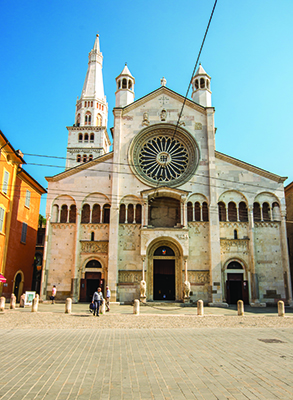
It was consecrated in 1184 but was then modified by the Maestri Campionesi (1190-1322), a dynasty of sculptors and stone masons from the Lariano-Ticinese area who created the side portals, the rose window, the presbytery narthex, and added the octagonal upper part to the Ghirlandina.
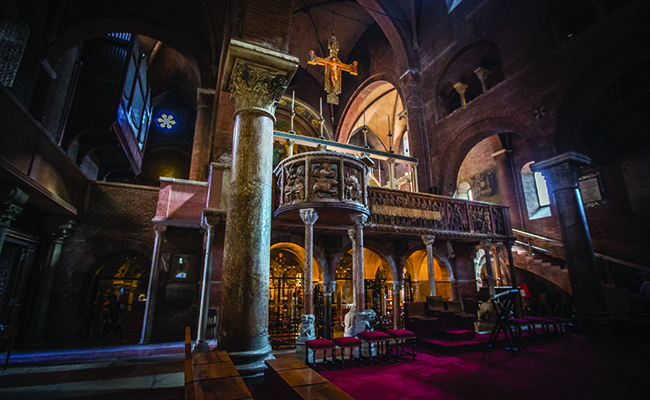
The interior hosts two magnificent nativity scenes by two famous terracotta artists from Modena: the nativity scene with the grotto by Antonio Begarelli (in a niche in the right-hand nave) and La Madonna della Pappa by Guido Mazzoni (in the crypt).
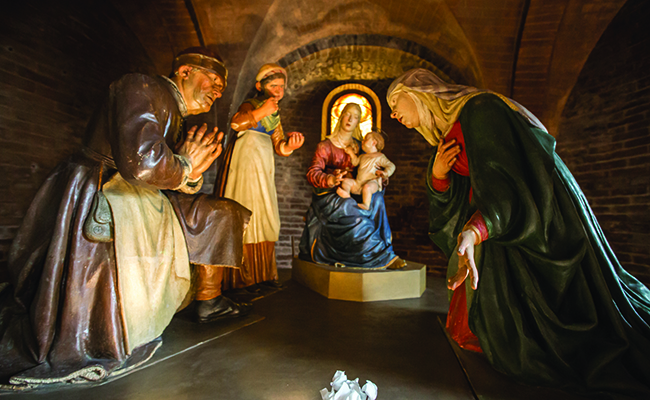
Steps from the Duomo is the historic Mercato Albinelli. This covered market offers a fantastic atmosphere and fresh, local produce – fruit and vegetables, meat, cheese, fresh pasta, local wine, flowers and more. It is usually open in the morning, Monday to Saturday, and is always busy with locals who come to grab their daily groceries or a quick take-away for lunch.
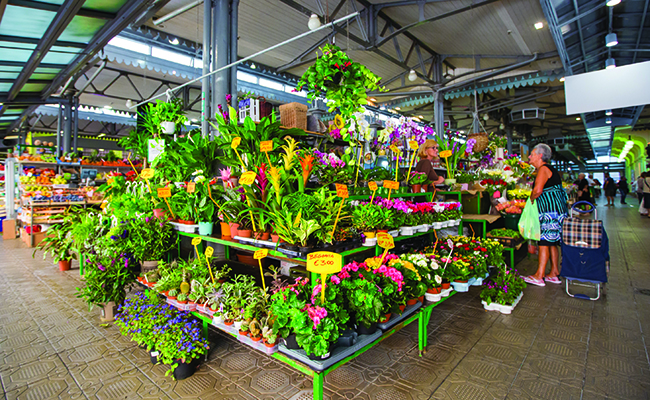
Not far from here, Palazzo dei Musei is a building hosting different cultural institutions: the Historical Archives, the Estense Library, the Municipal Museum of Art, the Municipal Museum of Archaeology and Ethnology, the Public Library of Art ‘Luigi Poletti’ and the famous Estense Gallery.
This latter is one of the greatest national galleries in Italy, and Europe, and definitely worth a proper visit. Having inherited the artistic heritage accumulated by the dukes of the Este family over two centuries (and also thanks to some more recent state acquisitions), the gallery boasts a large collection of paintings, sculptures, musical instruments and objects of decorative arts.
Among the most important works are the paintings by Cima da Conegliano, Tintoretto, Correggio, Veronese, El Greco, Guercino, Velázquez, Reni and the sculptures by Guido Mazzoni (the old head terracotta) and by Bernini (the bust of Duke Francesco I d’Este).
Gourmet itinerary
If you are in Modena for longer than one day – which I would highly recommend – you should definitely go on a gourmet itinerary in the countryside around Modena to discover some of the best produce that this region offers.
Here you will discover some of the most prominent producers of Aceto Balsamico Tradizionale, the rich and syrupy balsamic vinegar, known as ‘black gold’.
Also, you will discover the best Modena ham and the Lambrusco wine of some of the best producers of this area – you will learn all the steps in the production process and how they require hard work, time and passion to make and, most importantly, you will be able to taste the real products at the end of the tour!
You could also opt for the tour ‘Discover Ferrari and Pavarotti Land’ which offers a day ‘passport’ for €48 around the area which takes in the Ferrari museums, the House-Museum Luciano Pavarotti, some top local wine and balsamic vinegar producers, and the MUSA (Charcuterie Museum); all via a train shuttle that runs between all these stops.
In essence, Modena really does offer so much on one plate. Rich churches, extraordinary museums, a UNESCO World Heritage Site, fast cars and opera. If you are overwhelmed by its extraordinary beauty and culture, you could always gorge yourself on its fantastic food and indulge in DOP and DOC wine that has been locally produced.
